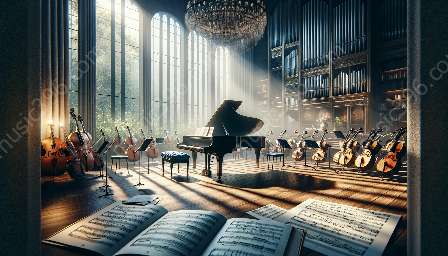Introduction
Music composition has a rich history, with rhythm and meter playing a central role in shaping musical works across different eras. The concept of rhythm and meter has evolved significantly, influencing the styles, structures, and expressions of compositions throughout history. This article aims to explore the development of rhythm and meter in music composition, highlighting key eras and their contributions to this evolution.
Rhythm and Meter in Ancient Music
Music in ancient civilizations such as Mesopotamia, Egypt, Greece, and Rome relied on rhythmic patterns created by percussion instruments and vocal chants. The concept of meter began to emerge as musicians and composers experimented with organizing rhythmic units into repeating patterns. This laid the foundation for the development of rhythmic notation and the establishment of meter as an essential element in music composition.
Medieval and Renaissance Period
During the medieval and Renaissance periods, the concept of rhythm and meter evolved significantly. Composers such as Guillaume de Machaut and Giovanni Gabrieli introduced polyphonic structures that required precise rhythmic coordination. This led to the use of standardized rhythmic notation, including the introduction of time signatures and bar lines. The emergence of dance forms such as the pavane and galliard further influenced the development of rhythmic patterns and meter in compositions.
Baroque Era
The Baroque era saw a profound evolution of rhythm and meter in music composition. Composers such as Johann Sebastian Bach and George Frideric Handel explored complex rhythmic structures, using intricate counterpoint and rhythmic ornamentation to enrich their compositions. The development of the fugue as a musical form demanded meticulous attention to rhythmic precision, contributing to the establishment of distinct rhythmic and metric conventions.
Classical and Romantic Period
In the classical and Romantic periods, composers expanded the expressive possibilities of rhythm and meter in music composition. Ludwig van Beethoven, Franz Schubert, and Johannes Brahms, among others, pushed the boundaries of rhythmic complexity and meter variance, allowing for greater emotional depth and dramatic impact in their compositions. The use of rubato and rhythmic freedom became prominent, allowing performers to shape the rhythmic interpretation of musical works.
20th Century and Beyond
The 20th century witnessed diverse explorations of rhythm and meter in music composition. Innovations in rhythm, such as polyrhythms, irregular time signatures, and aleatoric techniques, characterized compositions by composers like Igor Stravinsky, Bela Bartok, and Steve Reich. Additionally, the emergence of electronic music and minimalism introduced new rhythmic and metric possibilities, challenging traditional conventions and expanding the creative landscape for composers.
Impact on Music Composition
The evolution of rhythm and meter has significantly impacted music composition across different eras. It has influenced the structural organization of compositions, the development of rhythmic notation, and the expressive potential of musical works. Furthermore, the evolving concepts of rhythm and meter have inspired composers to experiment with new rhythmic innovations and expand the boundaries of traditional rhythmic and metric frameworks.
Conclusion
From ancient civilizations to the contemporary music landscape, the concept of rhythm and meter has continuously evolved, shaping the expressive language and structural foundations of music composition. Understanding the historical development of rhythm and meter provides valuable insight into the diverse rhythmic possibilities and creative potential within the realm of music composition.




























